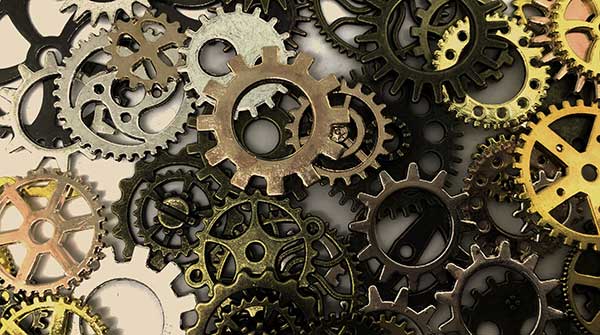The rise of digital twins in asset management
 Is there a digital twin in your future? As more companies adopt digital twins to manage their essential assets, it’s worth examining this trend and the value it delivers. Digital twins help engineers, technicians, and operators better understand how their complex assets are performing now and how they will perform in the future.
Is there a digital twin in your future? As more companies adopt digital twins to manage their essential assets, it’s worth examining this trend and the value it delivers. Digital twins help engineers, technicians, and operators better understand how their complex assets are performing now and how they will perform in the future.
Digital twins are virtual representations of real-world physical objects using data, modelling and visualization. Digital twins are dynamic and real-time. They are much more capable than static representations like a blueprint, a schematic, a picture, a scale model or even animation.
In part 1 of this two-part series, I defined digital twins and their value. Answers to more questions about digital twins are below.
What types of digital twins are there?
 |
A digital twin’s type is defined by its scope. Digital twins that can handle increasing scope also deliver more valuable insights while requiring more resources to operate.
Component twins are the basic unit of digital twins. Studying a component produces insights into the performance of variables such as strain or heat. Examples are a bearing or a compressor blade.
Asset twins consist of two or more component twins used to study the interaction of those components. This study simulates performance data under various operating conditions for actionable insights. Examples are an electric motor or a gas turbine.
System twins show how different assets come together to form a functioning system or physical object. System twins provide visibility regarding the interaction of assets and often suggest optimization enhancements. Examples are the compression portion of a natural gas compressor station or the frame stamping area of an automobile assembly plant.
Process twins reveal how systems work together to create an entire production facility. Process twins can determine bottlenecks that influence overall effectiveness. Examples are a natural gas pipeline or an automobile assembly plant.
What capability do digital twins have?
A digital twin helps designers, engineers, and operators understand how physical objects are performing now and how they will perform in the future. The ability to predict future performance helps manufacturers and engineers accomplish a great deal, including:
- Understanding the interaction of disparate systems.
- Predicting performance under revised operating conditions.
- Visualizing physical objects in operation in real-time.
- Troubleshooting far-away equipment.
When is a digital twin appropriate?
Building and operating a digital twin is appropriate when the physical object is complex enough that significant performance improvement opportunities exist. Examples of physical objects that are sufficiently complex are aircraft engines, cars, smart pigs for pipelines and railway locomotives.
The complexity creates a net benefit from applying a digital twin. With complexity, the advantage of a digital twin is sufficient to offset its high cost of development and operation. The cost is a function of the following:
- The complexity of a physical object with its many components and associated data points.
- The effort required to gather and manage significant volumes of real-time sensor data produced by the physical object.
- The number and complexity of the simulations that will be conducted using the digital twin.
How is a digital twin created?
The development of digital twins is based on sensing, data and modelling strategies required to achieve business and technical goals. Available data resolution, software capabilities and system coverage constrain digital twins.
To create a digital model, designers use a variety of software packages. For a quick overview of available software, click on this link.
Typically, the starting point is the data on blueprints, scans, bills of materials or digital models created in other software such as SolidWorks or AutoCAD.
What data do digital twins consume?
Digital twins consume sensor data about many aspects of the physical object’s performance. The data collected from the physical object depends on its function and is relayed to a monitoring system that manages it. Examples of data time series are:
- Pressure at various points.
- Internal and external temperatures.
- Rotations per minute (RPM).
- Energy consumption.
- Horsepower produced.
- Strain.
- Vibration.
- Humidity.
- Weather conditions.
This data is made available to the digital model and is used to run many simulations to study performance issues.
More companies are adopting digital twins to manage their essential assets and develop new products.
Yogi Schulz has over 40 years of information technology experience in various industries. Yogi works extensively in the petroleum industry. He manages projects that arise from changes in business requirements, the need to leverage technology opportunities, and mergers. His specialties include IT strategy, web strategy and project management.
For interview requests, click here.
The opinions expressed by our columnists and contributors are theirs alone and do not inherently or expressly reflect the views of our publication.
© Troy Media
Troy Media is an editorial content provider to media outlets and its own hosted community news outlets across Canada.

